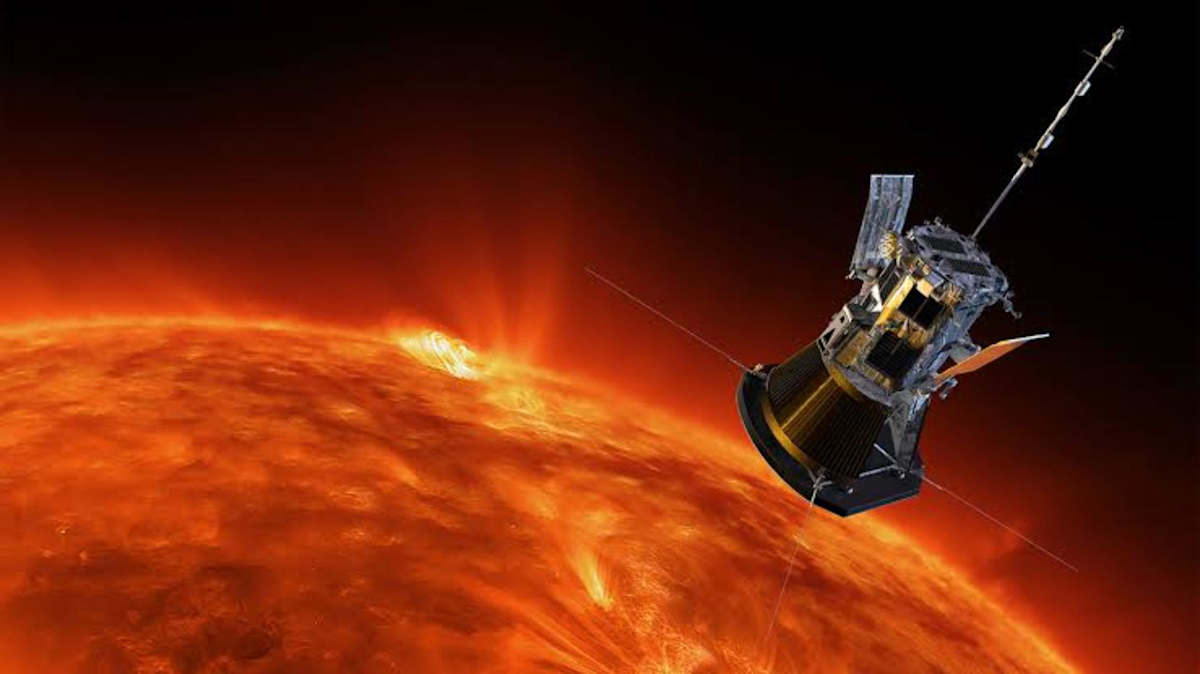I'm writing this in the summer during a spell of hot weather (yes, even in the UK). So I think it's fitting to write about a spacecraft that's been feeling the heat for quite some time - and it's just achieved a significant milestone.
The Parker Solar Probe is a ground-breaking spacecraft launched on the 12th August 2018, by NASA. Its objective was to fly closer to the sun than ever before and gather data on the solar corona, the outermost layer of the Sun's atmosphere.
The corona is a halo of extremely hot plasma that extends millions of miles into space and is not visible from Earth except during a total solar eclipse (or with specialized telescopes called coronagraphs). It is surprisingly hot, reaching temperatures of millions of degrees Celsius. In fact, it's roughly a thousand times hotter than the surface of the sun itself.
Understanding the corona will help with determining the origins of something called the solar wind - a continuous stream of charged particles that are ejected from the corona. This plasma flows outward through the solar system, interacting with planets and other objects it encounters. On Earth, the results can be beautiful, creating auroras (the Northern and Southern Lights). But, if the Solar Wind gets too strong, it can cause geomagnetic storms that can disrupt our satellites and power grids
Incidentally, the most powerful geomagnetic storm in recorded history is known as the Carrington Event, and occurred in September 1859. It was triggered by a massive solar flare observed by astronomers Richard Carrington and Richard Hodgson, and the auroras it created were seen as far down as the tropics. It caused significant disruption to telegraph systems. If such an event were to catch us unprepared today then the results could be devastating. Hence the need to better understand the solar wind.
So, now we know why the Parker probe exists, the next question is how does it protect itself? There are several elements to this:
· An effective heat shield: this is a 4.5 inch thick, carbon composite layer, coated in reflective paint, which keeps the probe's instruments at about 30°C.
· The shadow cone: the probe's automated control systems ensure its instruments stay in the shade of the heat shield at all times. If the probe were to drift out of alignment, the intense sunlight could swiftly damage components.
· Solar array cooling: unsurprisingly, the probe makes use of solar power. But its arrays partially retract when close to the sun and have water-cooled radiators (one of the few times water is used in spaceflight as a coolant).
· Materials and insulation: the components of the spacecraft have high heat resistance and are covered in thermal blankets and coatings to minimize heat transfer and radiation absorption.
Even with all this technology, the probe's survival relies on an interesting fact about the corona itself. Although its temperature is measured in the millions of °C, its density is very low - so the Parker Probe doesn’t experience as much heat as might be expected. It’s like putting your hand in an oven versus boiling water: the temperature may be higher, but the energy transfer is lower. As such, the temperature that the heat shield experiences is ~1500°C - still extremely hot, but not unmanageable.
The Parker Solar Probe only dives towards the sun at the lowest point of its elliptical, solar orbits. The original mission was for 24 orbits over roughly 7 years, drawing nearer to the sun using Venus gravity assists. These orbits have now been completed and the probe no longer gets close enough to Venus for further assistance. It is now stuck in its current orbit and dives within ~3.8 million miles (~6.2 million km) of the Sun's surface.
Parker's instruments are too many to list here. Perhaps most notable is its wide-field overhead camera system that captures imagery of the corona and solar wind structures. It also has a suite of sensors for capturing electric/magnetic field data and to track and measure energetic particles.
The data the probe has collected has done a lot to aid our understanding of the origins of the solar wind. Its detections of thinning dust within close proximity of the sun support theoretical predictions - increasing confidence in our models of solar behaviour. But mysteries remain - for example, surprising directional shifts in the corona's plasma flow have yet to be understood.
The probe has broken a number of records. These include becoming the first spacecraft to enter the corona and 'touch the sun' in 2021. Each time the probe flew closer it posted a new record for closest approach and fastest manmade object, achieving a highest speed of ~430,000 mph (~700,000 km/h).
The good news is that Parker is not done yet. It will continue operations until at least 2026, pending review. Further close approaches and data collection during rising and declining solar activity could revolutionize our understanding of solar dynamics.
With each successful flyby and scientific milestone the Parker Solar Probe is bringing humanity a step closer to understanding our star. Our sun is a giver of life, but it has the potential to take it away too - it's therefore important to be able to predict its behaviour.
